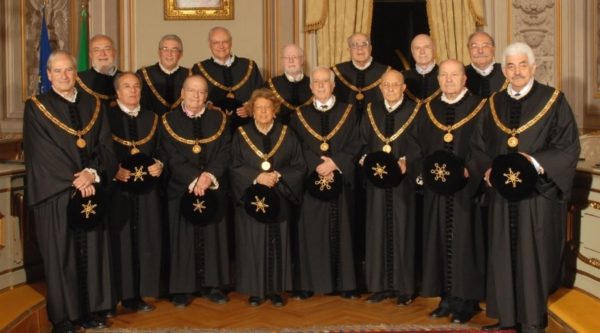The Constitutional Court of the Italian Republic, or Consulta, is Italy’s highest court regarding matters of constitutional law. In keeping with the framers’ notion of a “rigid” constitution and a centralized system, the court was designed as an ad hoc organ for constitutional justice separate from the judiciary. The court resolves controversies on the constitutional legitimacy of laws issued by the State or Regions, settles conflicts involving the allocation of powers between the State and Regions, and passes judgement on charges brought against the president.
Consulta vs. SCOTUS
To better understand the ideas underpinning Italy’s approach to constitutional review, a quick comparison with the US Supreme Court is in order. The US Supreme Court, or SCOTUS, functions in a decentralized system and is expressly intended to act as a check on the legislative and executive branches. This is not the function of Italy’s Constitutional Court, which instead sets out to rigidly apply the constitution in its judgments. This is reflected in the selection of cases to be heard. The US Supreme Court has a famously elaborate selection process, choosing cases based on what the individual justices find most pressing or urgent. In Italy, meanwhile, questions of constitutionality that end up in the Constitutional Court are usually simply submitted by ordinary judges. Consequently, the caseload of Consulta is significantly higher than that of SCOTUS.
Even the composition of the two courts highlights the different approaches. As befits a system of checks and balances, the US President fills any vacancy in the Supreme Court and the Senate confirms the choice. Invariably, there is a political component to this. Italy, with it’s more centralized philosophy, seeks to reduce the politics involved by dividing the court into thirds: five judges appointed by the President, five elected by the Parliament, and five elected by the ordinary and administrative supreme courts.
Read more articles on our website:
- Citizenship by Descent, new legislation effective June 2022: what you need to know
- Italian dual Citizenship and Last Name Issues

